It grows in ravines and near creeks. It grows up sycamore trees. The wild grape of Southern California can cover a massive area, but you can tame it and grow it in your yard too.
On December 28, 2015, I cut a few pieces from a vine in a canyon near me and stuck them in the ground. They rooted into vigorous but manageable plants that provide shade on the east-facing windows of my house.
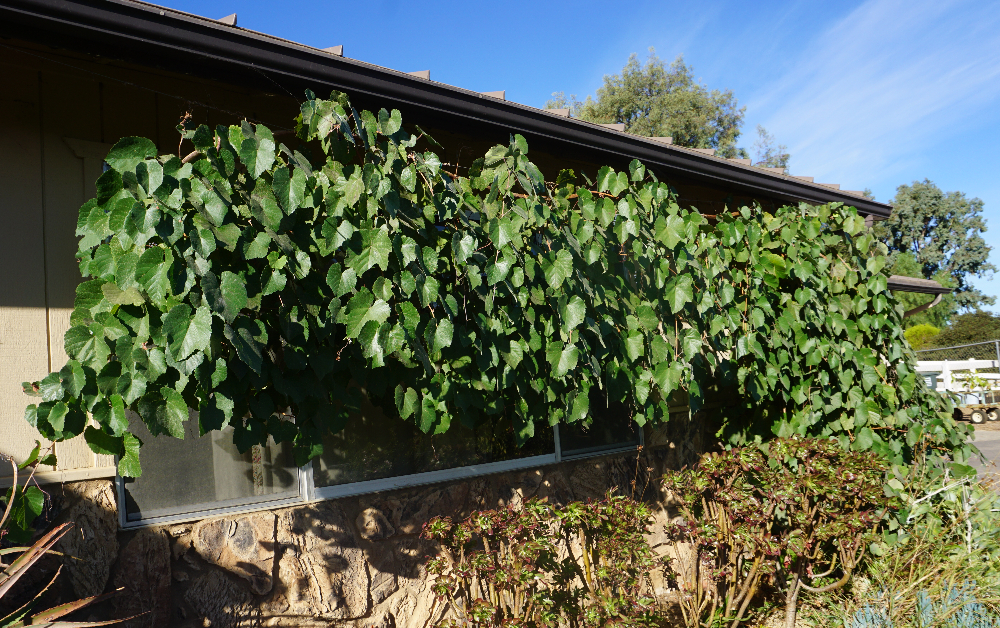
(My post: “Grapevine on eave to shade house.”)
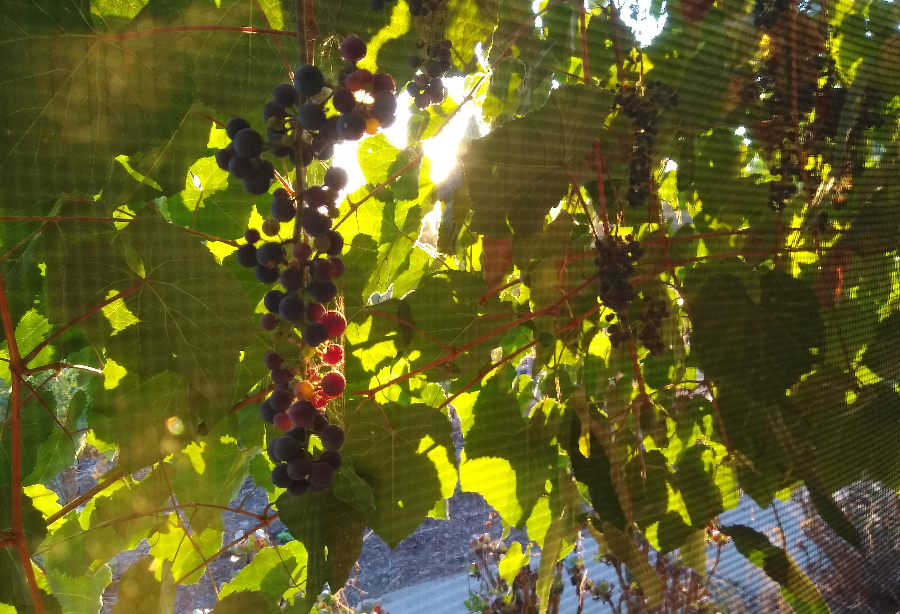
Each October we eat the grapes from these vines. The purple grapes are small and with large seeds, but the flavor has a fine tang. I often just chew them to get all the juice and then spit out the seeds and skins.
Vitis girdiana is the botanical name. Some call the plant “Desert grape.”
I read that the wild grape that grows farther north in California is considered a different species (Vitis californica), but when I’ve seen wild grapes up there I haven’t noticed any difference between them and the wild grapes in Southern California.
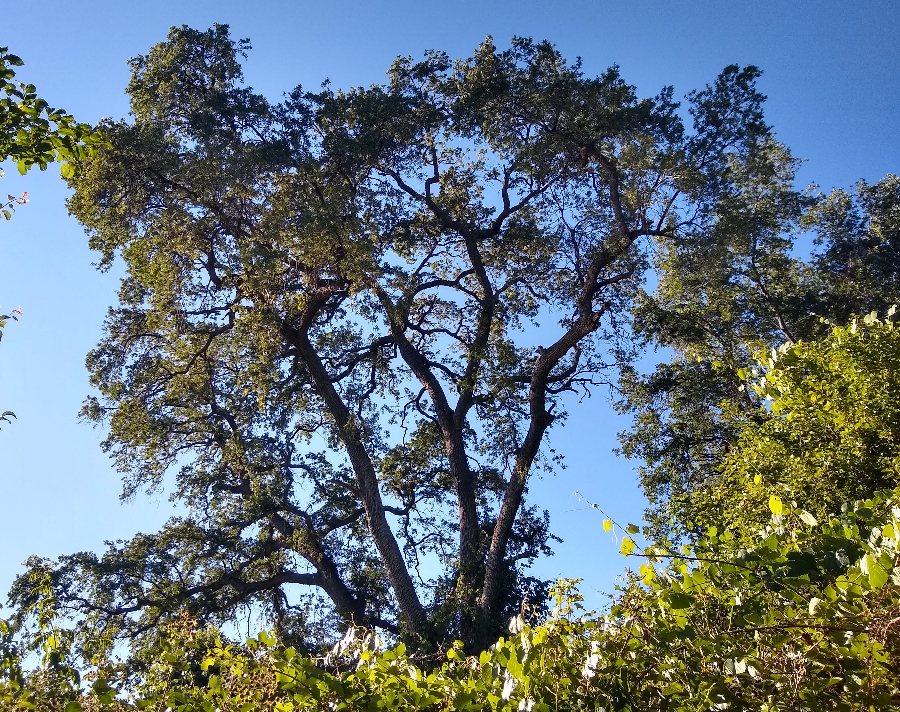
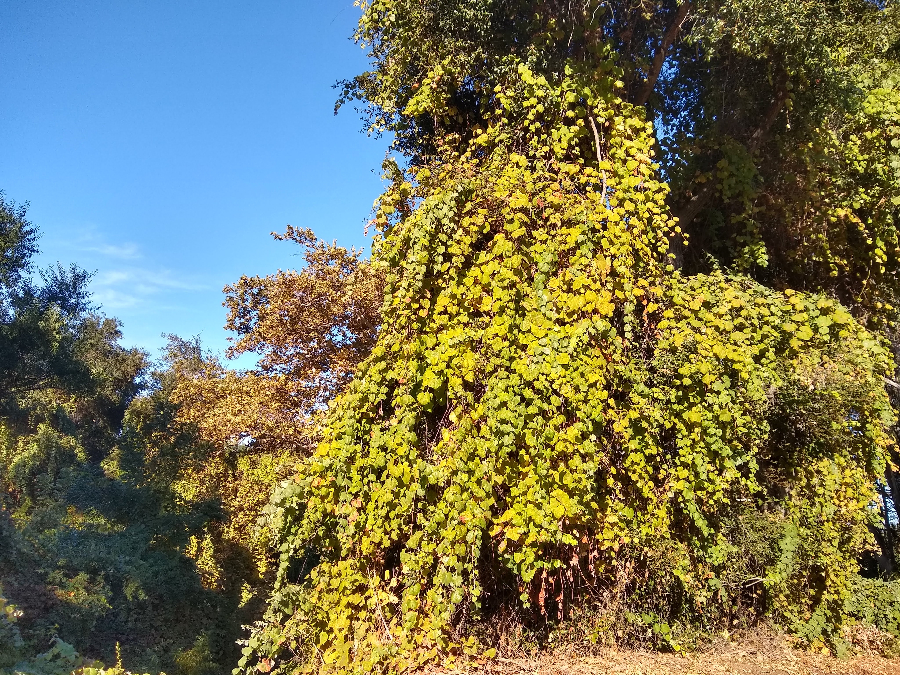
Here in the fall the wild grapes become noticeable as you drive or hike around since they begin to turn yellow and orange.
By Christmas all of their leaves will drop and they will just be sticks winding around on the ground and over bushes and up tree trunks. In the spring they will bud back to life with lime green new leaves.
During late summer, I sometimes find yellow striped caterpillars eating my wild grapevine leaves. The caterpillars are called Western grapeleaf skeletonizers, and I think they’re beautiful.
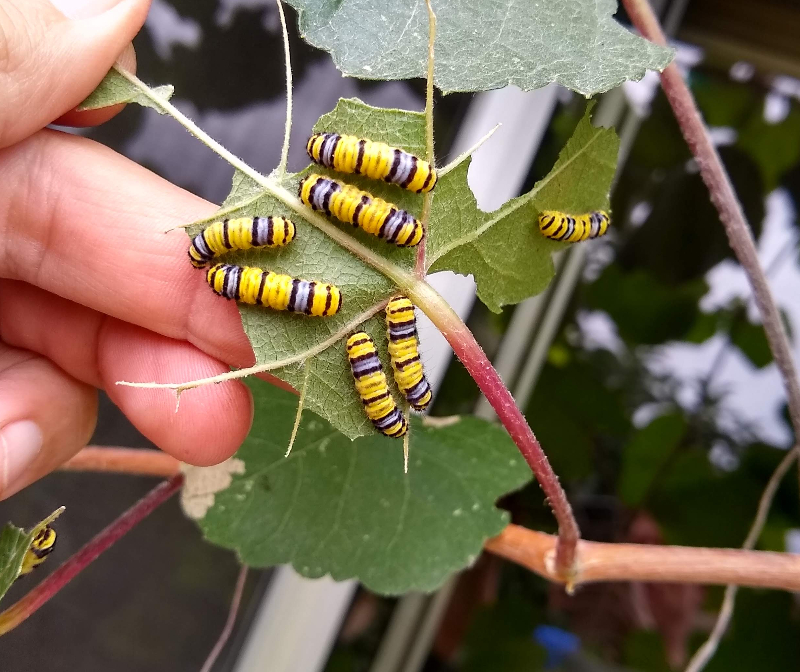
Bushtits visit the vines to peck at the grapes in the fall, and they also eat aphids on nearby plants so I like that the wild grapevine draws them into the yard.
I don’t water my wild grapes. I did the first year they were in the ground, but I stopped after that. Their root systems are exploratory and have found water given to vegetables and fruit trees nearby, and even not so nearby.
Besides summer shade for a window, other uses I have seen for a wild grapevine include shade for an arbor.
You may be able to buy a vine from a nursery that sells native plants, but you could also take a hike in a canyon and keep an eye out for a wild grapevine. If you find one, return in winter when it’s dormant, take a cutting and root it. Then you’d know for sure what your wild grapevine will grow up to look like.
(My post: “Propagating grapes with cuttings.”)
My Yard Posts are purely supported by you. Thanks.
All Posts are gathered in a list here.

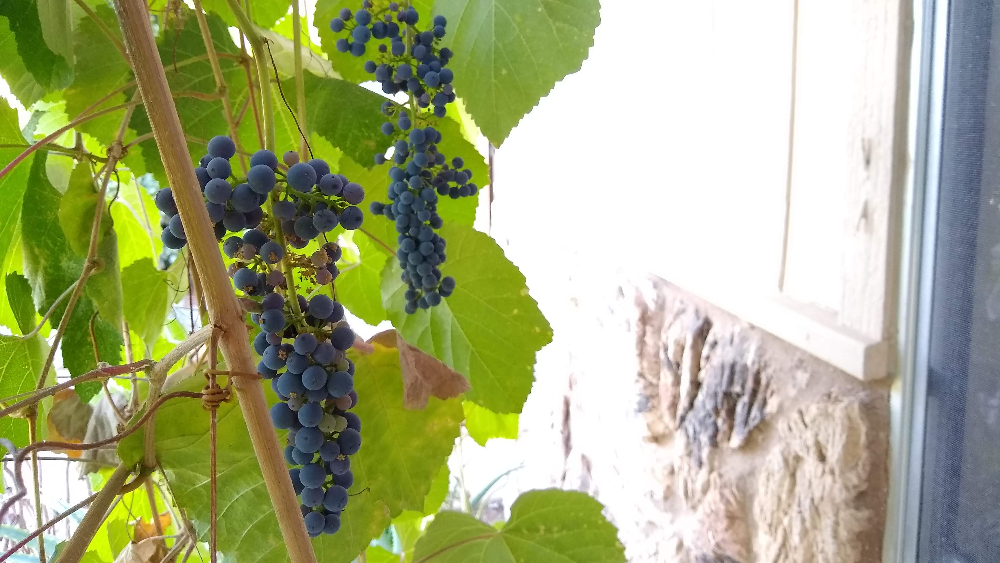


After I dropped out of a bicycle century run (100 miles) due to lack of training (I made it the previous year), I found a farm house selling Concord grapes for cheap. Not good eating, but I made them into wine. It’s pretty easy and it’s legal up to 200 gallons a year for personal consumption.
Hi Greg,
I’m in the process of doing this myself, inspired by your experience. A couple of summers ago, I found some wild grapevines by a creek a few miles from my house in Carlsbad. The winter before last, I went back, took some cuttings, and poked a few canes into the ground. By the following summer, one had already climbed 12 feet up to the eaves of my house. This year, it grew another 15 feet along the eaves over a set of east-facing windows. Next year, I’m hoping it will send down shoots in front of the windows for shade. Your example was exactly what I needed—thank you for the update.
I planted native california grapes in my yard many years ago and have yet to have a crop. I’ve tried just letting it go, trimming it back quite a lot, and everything in between. But, while there are lots of beautiful leaves and robust flowers, none of them turn to grapes.
Any suggestions?
Hi Michelle,
Where did you get the plant from? Are you sure which type of grape it is?
I did notice a wild grapevine in a canyon this summer that had no fruit on it, and that surprised me because I’d seen fruit on grapevines in this canyon before.
I have read that the wild grapevines of our region don’t fruit as well near the coast, but I don’t know this to be true firsthand. Are you by the coast?